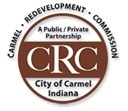 Karen Kennedy and Pete Smith
Karen Kennedy and Pete Smith
Questions still remain unanswered following the release of the State Board of Accounts’ 2012 audit of the Carmel Redevelopment Commission. The largest of which is: What happened to almost $800,000 in uncollected money owed to the CRC from its energy consumption agreements?
According to Carmel City Council President Rick Sharp, when the Center for the Performing Arts was built, the engineers decided that it would be best, in terms of acoustics, structural issues and economics, to build a separate mechanical house for the electrical circuits and water heating and cooling mechanisms that would service all of the buildings at the Center for the Performing Arts campus – the Palladium, the Tarkington and the James Building – in addition to city facilities like the police station, the fire station and city hall.
“The Energy Center has many benefits to the City,” said City Spokeswoman Nancy Heck in a statement. “It is creating a more cost efficient way to heat and cool several buildings using one system rather than having separate systems for each structure and has allowed us to replace an aging system in older buildings.”
It was determined that water lines would be run from the Energy Center to these buildings with water-cooled heat and air conditioning. According to Sharp, then-CRC ExecutiveDirector Les Olds sold this plan to the city council and called it a gift to the city, but later presented the city with a contract for energy services.
The State Board of Accounts audit said that of the $1,343,697.60 in Energy Center fees due to the CRC in 2012, the actual amount collected was $555,822.90, leaving a deficit of $787,874.70.
Addressing the issue, Heck said in a statement, “The CRC made payments to the lender in 2012 in the amount of $1,708,952.88. Various city departments, the Palladium, the Office Building and the Tarkington transferred payments totaling $555,822.90 to redevelopment, which went toward that $1.7 million payment.”
“The CRC wanted other city departments to pay the full $1.7 million dollars annually. The SBOA relied, when making their audit comment, on a contract requiring other city departments to pay that amount; however that contract was not signed by the appropriate official and therefore was never valid. The amount that was actually paid by city departments for 2012 was the amount approved by the city council as part of the budget process. The procedures and the amount the various departments will pay in the future will be based on the amount previously approved by city council in the 2013 and 2014 budgets.”
Sharp rejected this claim as untrue, saying that the council’s approval of a city-wide budget did not have any bearing on the CRC’s Energy Center agreements.
Sharp went on to say that he didn’t believe the $787,874.70 detailed in the audit was missing, but that an accounting error is likely the culprit in the discrepancy.
“I do not have evidence that funds are missing, because I have not been presented with books that substantiate that fact,” Sharp said
The State Board of Accounts couldn’t comment further of the discrepancy either.
Mike Bozymski, the Deputy State Examiner for the State Board of Accounts, said his department is exclusively a reporting agency and doesn’t have enforcement power.
“We hope when we get in there next year to do another audit that the (uncollected) money will be accounted for,” he said.
Bozymski said that this audit had not been forwarded to the Indiana State Police for further investigation, but he did say that the audit was forwarded to the Hamilton County Prosecutor on Nov. 4.


